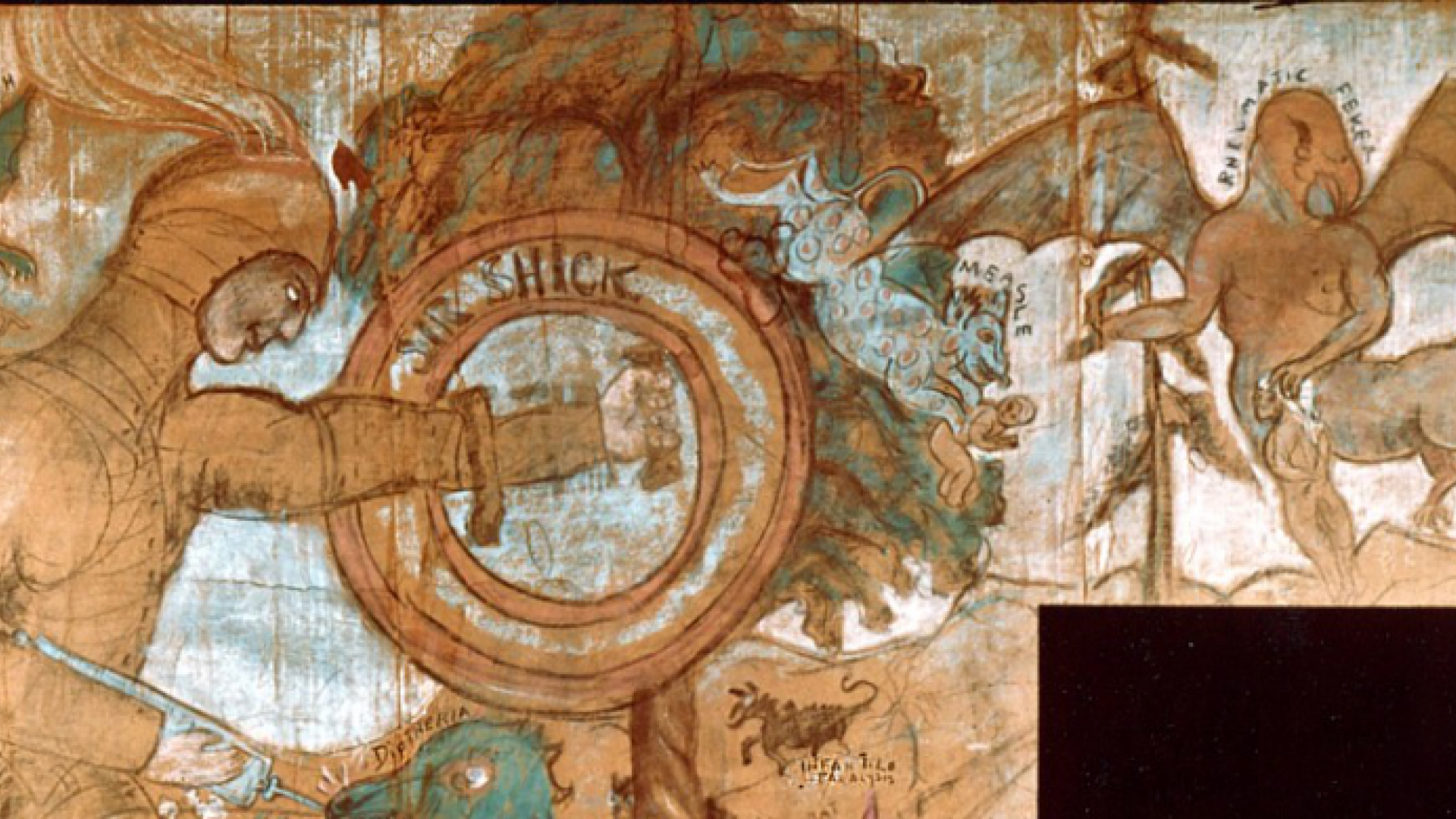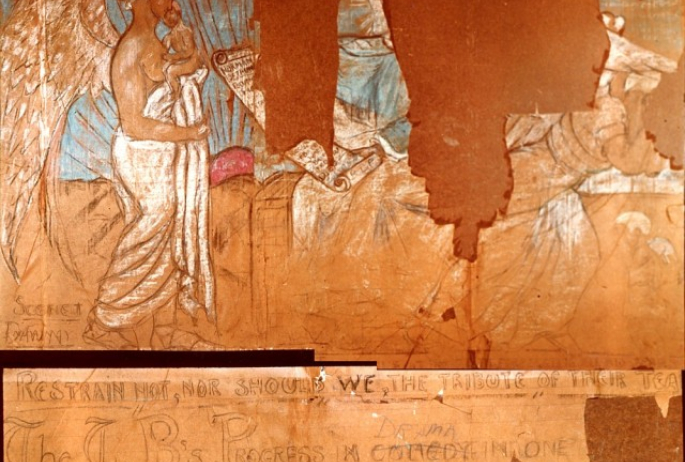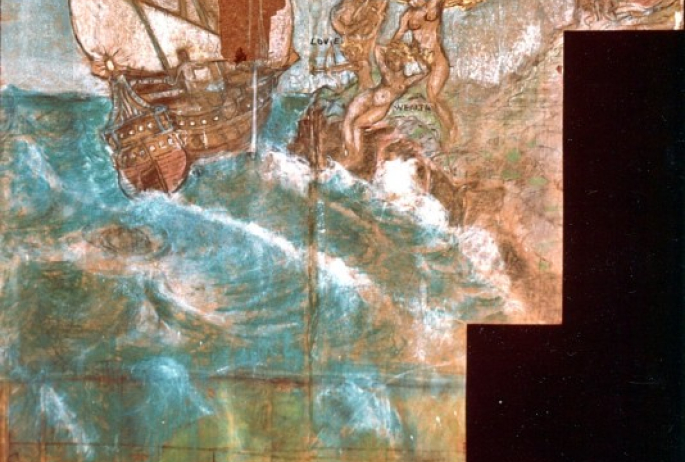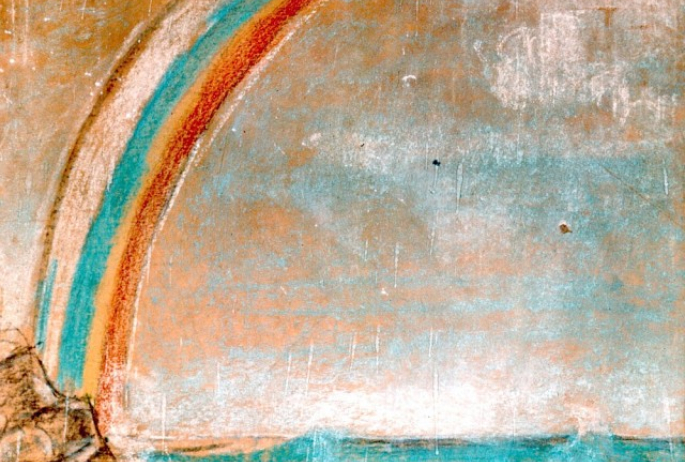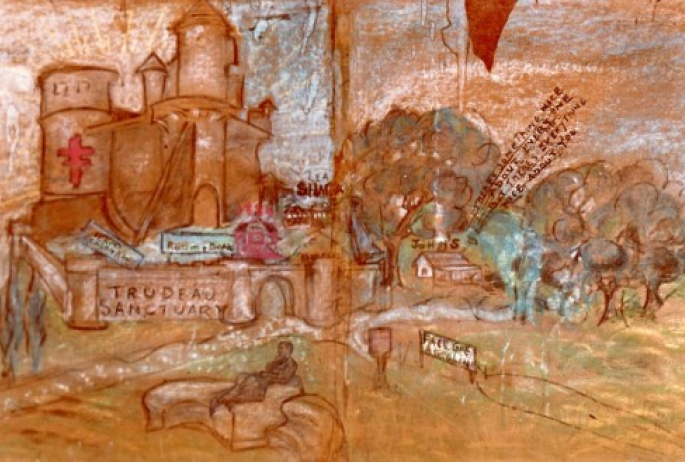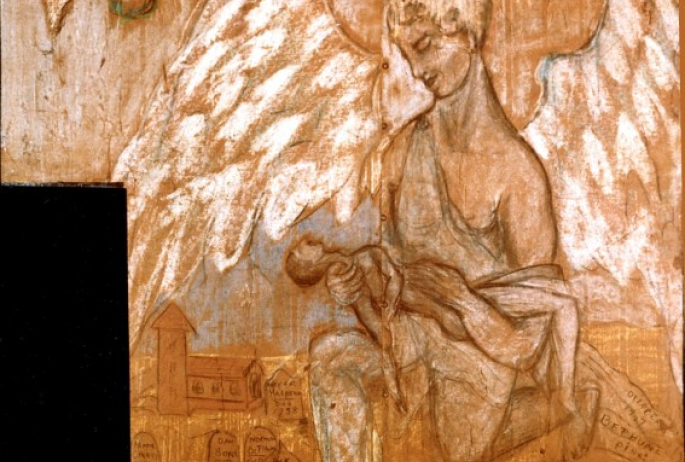Norman Bethune is a famous Saranac Lake artist. His most celebrated work was created here, in the Trudeau Cottage Sanitarium, where he was both a doctor, and a patient. He was also an inventor: the Bethune shears, for thoracic surgery, are still in use today. He was a humanitarian: his many medical patents were donated to the cause of socialized medicine. He was an innovator: he organized the first mobile blood banks to save the lives of wounded soldiers.
He was a writer: publishing poems and short stories. He was a teacher: he founded an art school for poor children in Montreal and later trained paramedics in China so the people, not just their soldiers, could get medical care. He was a surgeon: working in the field during WWI, the Spanish Civil War, and the Chinese resistance against Japan at the dawn of WWII.
hero in another land
As the title of a recent documentary put it: "Dr. Norman Bethune - The Best-Known Canadian in the World." Yet he is not as famous in Canada as he is in China, where there are statues of him all over the country. The Norman Bethune Medal is the highest medical honor in China. Here, this pioneering surgeon is revered for his selfless efforts on their behalf, both on the battlefield and in their villages.

Before this, however, he was a doctor, in his late 30's, with tuberculosis, and curing at the Trudeau Sanitarium. For such a highly driven, multi-talented person, the enforced rest of a tuberculosis cure must have been very difficult. Perhaps that is why he channeled all his available energies into his most dramatic and extensive work in 1927.
It was a scroll sixty feet in length, five feet tall at its highest point, painted with what looks like poster colors, and drawn in pencil. He had no canvas, so he used brown wrapping paper from the Sanitarium laundry. He named it "TB's Progress."
What we know of this work comes from Bethune's own notes in the Sanitarium journal, "The Fluoroscope," from August 15, 1932. By his own description, the first image (now missing), was a drawing of his "prenatal existence." The story continued chronologically, with his birth, childhood, and teen years all metaphorically illustrated in a style reminiscent of Mannerism.

emotional metaphor
Mannerism is an intellectually sophisticated style with compositional tension and instability, known for a highly florid emotional palette. It was a late Renaissance innovation of Michelangelo.
Such works as the Sistine Chapel ceiling rely upon figures caught in motion, expressing emotional states, and interacting with abstract and artificial concepts that have been personified for the work. As seen above, Bethune the artist illustrated his adolescence as a ship on a stormy sea, tossed back and forth by forces he labeled Art, Fame, and Love.
Dr. Bethune created a highly symbolic, yet not abstract, work. All the elements are readily recognizable as elements of the real world, part of Nature. Yet the way he uses these elements are as highly charged metaphoric symbols. He does not portray real-world struggles in a realistic form. Instead, he creates dreamlike structures and personified abstractions.

This lovely rainbow (whose position in the final work is unknown) is a classic symbol of hope. Something every TB patient needed in abundance. In his own writing about his art, Bethune declares that he drew ideas "from old medieval illuminated manuscripts," and that inspiration can certainly be seen in the choice of color and symbolism. The use of scale and perspective shows some studious application and a more developed style.
In his depiction of the Sanitarium itself, Bethune discarded geographical conventions to blend many landmarks familiar to the Sanitarium's patients. The famous statue of Trudeau, a symbolic wall, and the first cure cottage, Little Red, crowd together more in the form of a memory than a photograph.

the mysterious disappearance
In 1932 Dr. Bethune left the sanitarium, fully cured. He left his mural in the care of fellow patient Dr. John Barnwell. Upon his own release, Dr. Barnwell brought the work to the University of Detroit. In the 1960's, it moved to Saranac Lake's Free Library. Because of its size and fragility, it wound up framed into nine panels for display.
In 1963 it was sent to Syracuse at the request of the National Film Board of Canada, as they were making a documentary about Dr. Bethune. There it stayed until the summer of 1967, when it was allegedly sent to the John F. Kennedy Center for Military Assistance in Fort Bragg, NC. All records have been lost; though a librarian recalls that the Army wanted them for psychological study.
That was the last time they were seen. Whether they are in storage somewhere, moved on to parts unknown, or even destroyed, is now completely unknown. These pictures, created from glass plates in the custody of Historic Saranac Lake, are all that remains of this fascinating work.
It's a terrible shame that this amazing work vanished mysteriously. I find it compelling and intriguing. To see the work at its true size, in person, would be even more emotionally affecting.

a heroic ending
Dr. Norman Bethune would go far in the years since he left his illness, and this mural, in Saranac Lake. He traveled to China and worked, tirelessly and selflessly, as a military surgeon and medical trainer until he cut his finger while operating. He contracted blood poisoning and died on November 12, 1939. Ironically, the development of antibiotics was only a few years away, and is now a highly effective treatment for both of his major, life-threatening, illnesses.
During his lifetime, and for decades after, Dr. Bethune was little-known and unappreciated in his native Canada. Since the 1970's, he has been slowly rediscovered. Now this mural is still being sought for exhibition at Bethune Memorial House, his birthplace, and now, museum.
In the header picture of this post, Dr. Bethune envisioned himself as a knight-like doctor, fighting disease. The caption reads: "Scene II, Childhood. From Dragon Diphth, Sir Shick defends, From other beasts he cannot save, The wounds and scars of their attack, He'll carry to his grave."
Despite all his other talents and identities, Norman Bethune was first, and foremost, a highly compassionate and gifted healer. He might not have been a great artist. But he was, most certainly, a great person.
Find out more about Saranac Lake's art scene. We offer many delightful art events. Much of it is located in our historic downtown, with a wide variety of waterfront lodging available within strolling distance.
